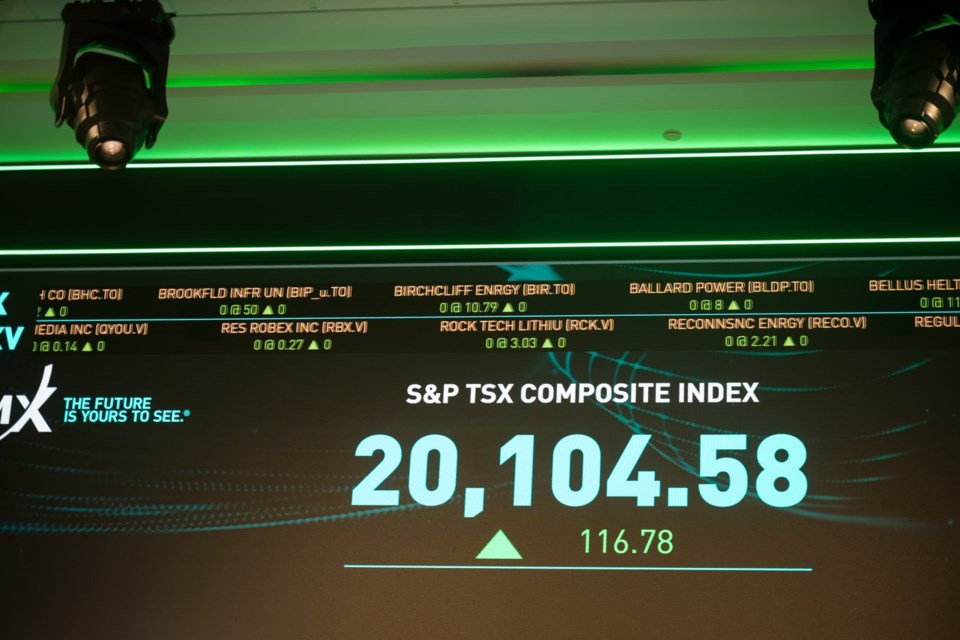TORONTO — Exchange-traded funds have long been a solid pick for investors looking to passively track an index like the S&P 500, while mutual funds were a good bet for active management of portfolios.
But active ETFs — ones where portfolio managers are trying to beat an index with their stock picks — have combined some of the best traits of both options to become a fast-growing preference for Canadians.
The industry is rushing to meet growing demand.
So far this year, 71 per cent of new ETFs launched have been active, the highest share ever, and 30 per cent of total industry flows have gone into the category, according to Bloomberg Intelligence.
The interest has also drawn some new players to the space. In October, Capital Group’s first active ETFs launched in Canada and J.P. Morgan made its first ever foray into investment options for retail investors in Canada with two active ETFs.
"The industry is at an inflection point,” said Travis Hughes, head of Canada at J.P. Morgan Asset Management.
“We are just in the early stages of seeing this transition, and we're excited to play our part in it.”
The push to offer active ETFs comes as Canadian investors are increasingly turning away from higher-cost mutual funds.
The two products can offer similar investment themes and approaches, and both pool money into a fund that buys into a selection of stocks, bonds and other assets.
But the infrastructure behind mutual funds is much more costly than for ETFs. That's helped J.P. Morgan, which has until now focused on institutional clients in Canada, to offer investment products for advisers and retail investors, said Hughes.
"To have mutual funds, you have to have a fund account and there's other costs associated with that, but with the ETF, it simplifies that process.”
Cost is a key reason why active ETFs are gaining momentum, with average management expense ratios of 0.53 per cent, according to Bloomberg, whereas mutual fund fees are typically higher than one per cent.
Advantages other than the cost factor include transparency of what's in the fund, the ability to trade ETFs throughout the day, and tax advantages. Because most trading for ETFs is on the secondary market, there’s less rebalancing and selling of stock needed, meaning fewer capital gains distributed to investors, said Hughes.
The difference helped see ETFs of all kinds gain $33 billion in new assets in the first six months of the year, while mutual funds saw outflows of $8 billion, according to a TD Securities report.
The trend is growing enough in Canada and elsewhere that MFS Investment Management, the inventor of the mutual fund a century ago, announced plans to launch its first active ETFs in the U.S.
But while active ETFs are less expensive than mutual funds, passive ETFs that just track an index are even cheaper, with some charging around 0.05 per cent.
Passive investing has gained ground during a decade of strong returns for major indexes like the S&P 500, making it challenging to beat the market, Hughes acknowledged.
“It is very difficult to consistently provide alpha versus the market,” he said.
“But that being said, if an individual investor or financial adviser can do their research and leg work to find active managers who can provide that alpha, it's a very powerful tool.”
Using active management to potentially reduce downside risk is worth considering, said Jean-René Ouellet, investment specialist for Desjardins Group.
He said that the dominance of Nvidia, Apple and the rest of the magnificent seven tech stocks in market gains may be reaching its limits, meaning more room for higher returns elsewhere in the market.
“Investors might be smart to think differently, and switch from their market cap weighted indexes to a more active mandate and different strategies rather than the pure passive.”
Even something as simple as an equal weighted S&P 500 ETF can reduce the concentration risk. Equal-weighted ETFs give all companies on the index an equal share in the portfolio and are actively managed by rebalancing the portfolio.
It can provide downside protection compared with a conventional ETF that just passively tracks the index and can be swayed by the changing fortunes of one of the tech giants.
Downside protection is a key offering of active ETFs since they can add structures like options to help soften the blow, while the individual companies chosen are also meant to lead to a lower loss than the overall market.
“You're not suffering as much as the market does, that's kind of the whole or coded advantage of an actively managed portfolio,” said Xin Lou, a financial planner at Coast Capital.
Along with downside protection, many active ETFs also aim for income generation. The J.P. Morgan ETFs use options to help earn a little extra on top of any equity gains.
Finding ETFs that fit the theme an investor is looking for is key, said Lou, since it’s important to be able to stick with an investment for the long term.
“It's long-term compounding that's really going to help you achieve your goals. So we need to make sure that you're in something that you're comfortable with and you're not going to bail out on in the first sign of trouble.”
This report by The Canadian Press was first published Nov. 28, 2024.
Ian Bickis, The Canadian Press
